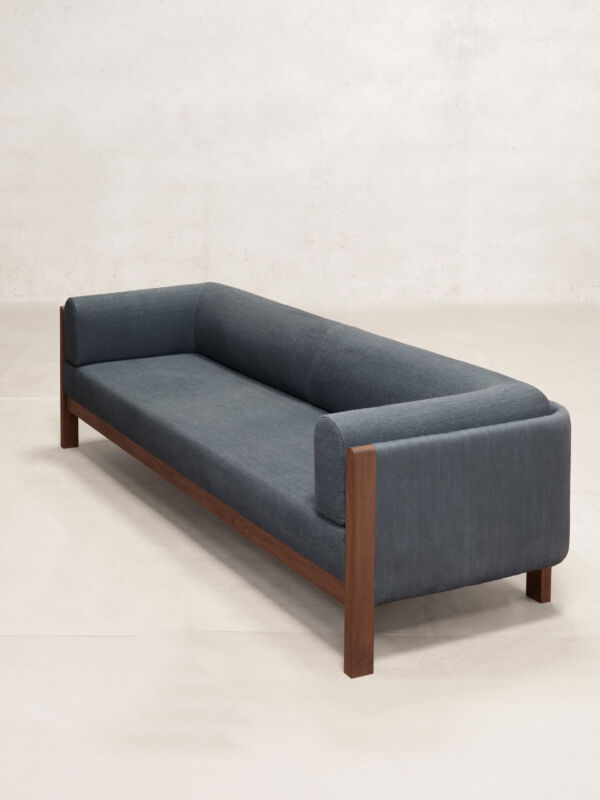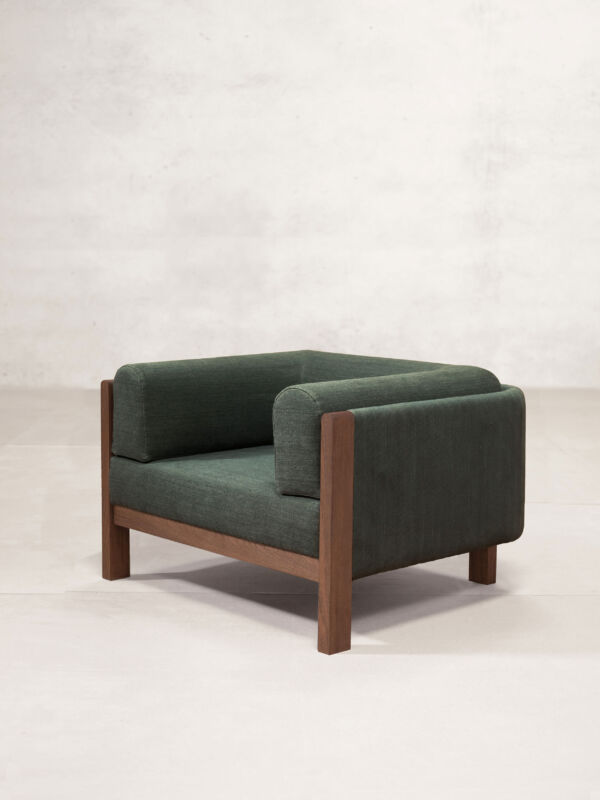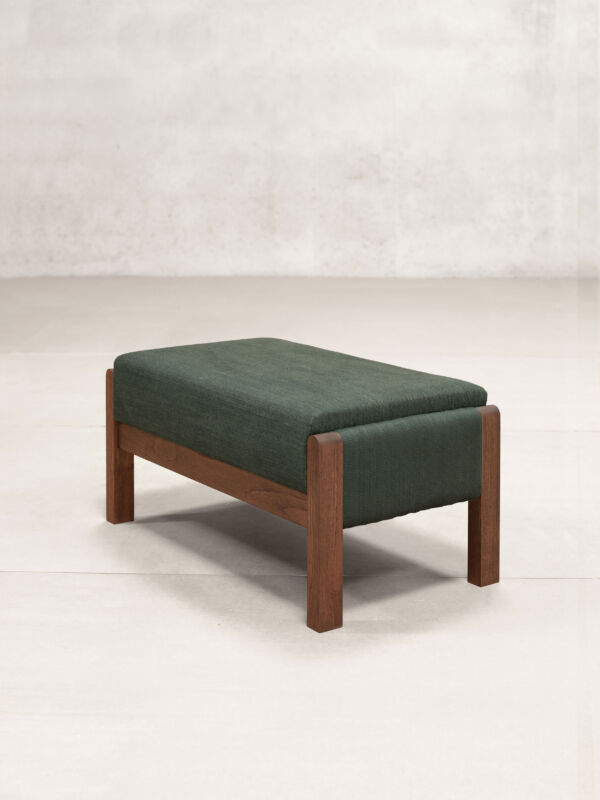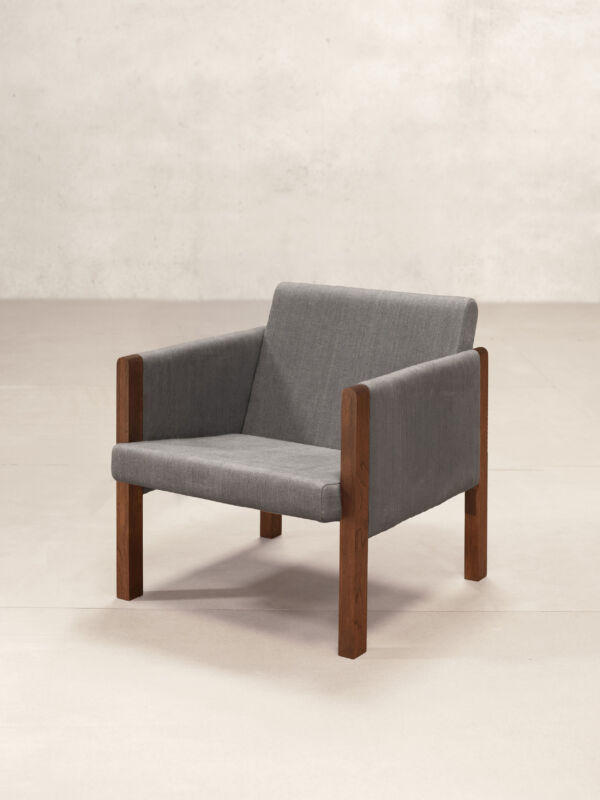Crafting Place and Building Systems: A Behind-the-Scenes Look at the Niwar Collection
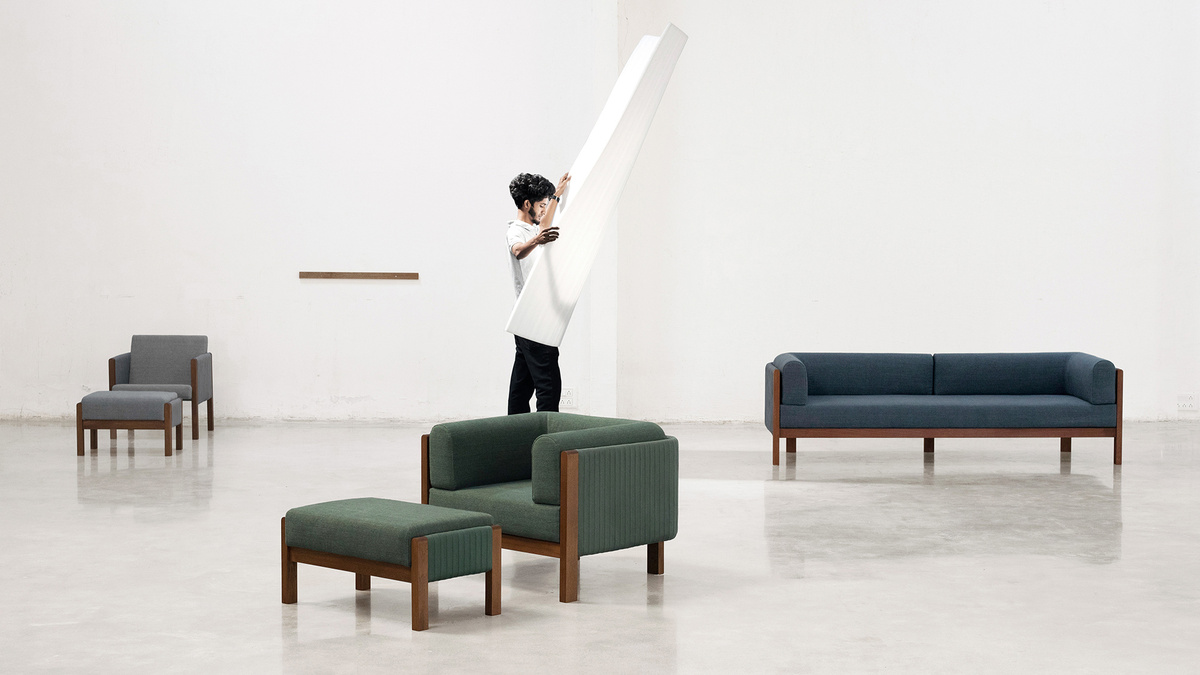
Image : Phantom Hands
Parni Ray
19.07.2024
The Niwar Collection, created by Phantom Hands in collaboration with the Switzerland based design studio BIG-GAME, has been a game changer. Not only has it heralded a new creative role for Phantom Hands, but also sowed the seeds for its plan to mould itself into a craft innovation enterprise. A look behind the scenes at this critical juncture.
A turning point for Phantom Hands
It wasn’t yet dark that February evening in 2021, when we gathered in a room on the upper storey of the Bangalore International Centre. The audience was sparse, a party of close friends and associates of Phantom Hands (PH). Standing before a flickering screen, Phantom Hands’ co-founder, Deepak Srinath, was telling us how the journey began. It was a big day, the launch of PH’s new logo and website; reminiscing felt apt.
People cheered, pointed, laughed and nodded knowingly as pictures on the screen flashed and disappeared. Images of PH’s first workshop, first chair, first carpenters lit up the room. There were faces galore; some known, others of strangers. Tucked amidst them, a few minutes into the montage, was a curious photo of three men standing awkwardly beside Deepak, watching two workers polishing a chair.
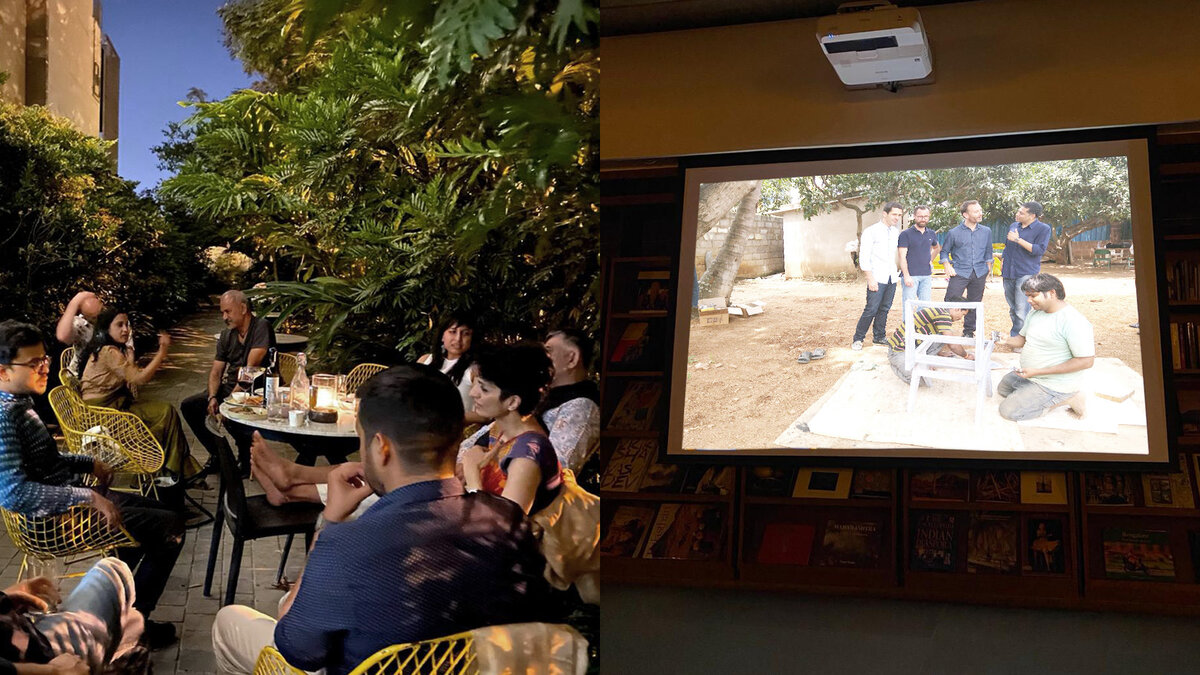
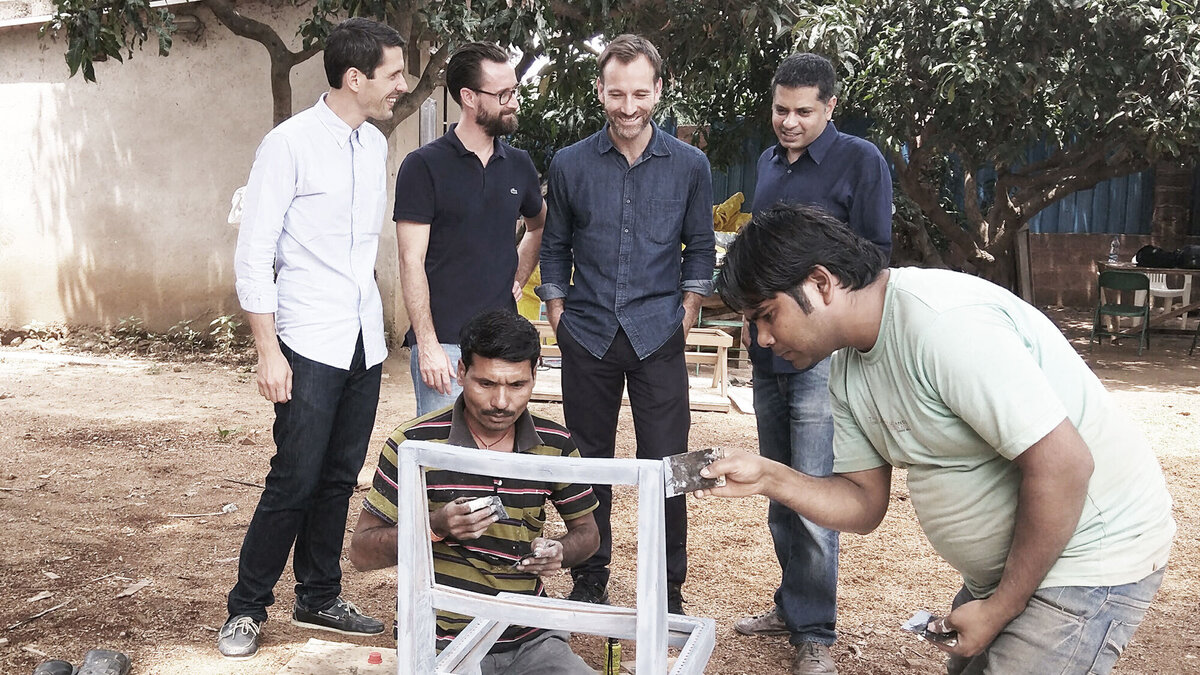
‘Until then I had quite forgotten BIG-GAME (BG) came to visit us in 2016’, PH co-founder Aparna Rao said recalling the picture. It was early days. A makeshift workshop had just been set up, a few woodworkers hired and PH had just started remaking Chandigarh’s iconic furniture. Meeting a well-known design studio like BG at that stage was great, 'but perhaps a little premature’, Aparna reflected. The picture made her wonder if it might not be a good time to re-connect.
Much had changed at Phantom Hands since BG’s unexpected visit. In 2017 it launched its first contemporary collection and had taken a sharp new turn towards design entrepreneurship. The tiny workshop had expanded into 3900 sq. metres of shop floor spread over several sheds. Besides the carpentry department it now housed PH’s cane weaving section, polishing section, an upholstery unit and a small R&D division with a library of craft and materials research.
The PH community is now 110 strong and consists of a range of craftspeople - cane workers, polishers, upholsterers, apprentices. By the end of 2022 there were roughly 60 items in PH’s roster, a list to which it has been adding steadily at an average of two collections every year. Bit by bit its clientele too has grown; currently PH’s furniture is distributed in over 27 countries and retailed by top-rung design galleries and showrooms across the world.
These big and small wins propelled Aparna’s journey to Lausanne to meet BG in the autumn of 2022. It was the second meeting between PH and BG and it was unusual. Unlike every other time in every other designer’s studio, here Aparna stood with a brief, a dream of PH’s own. ‘A sofa’, she told Augustin (Scott de Martinville), Elric (Petit) and Grégoire (Jeanmonod) ‘let’s work on an upholstered sofa’.
In the months that followed there were several hiccups, failures, lulls, ideas that simply didn’t translate; there was also the chance discovery of a piece of local cloth tape - the Niwar. Innocuous and nondescript, not only did the modest tape come to define the BG’s Niwar collection, it also heralded a creative turning point for Phantom Hands.
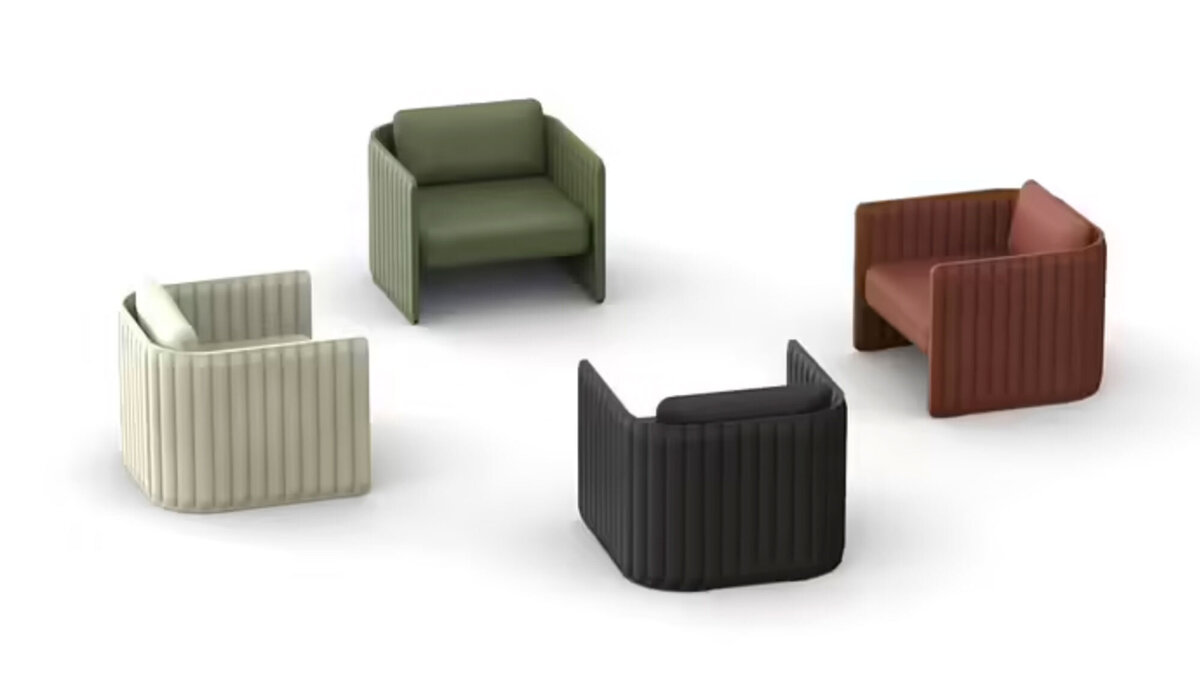
The Dream of a Sofa - A Comfort Story
PH’s dream of creating a sofa was an inevitable outcome of its explorations into modernism. But the path leading up to this aspiration was circuitous.
It started at the Milan Design Week, in 2022, the first year of PH’s participation. The response was unanticipated. Standing at the most important design fair in the world, watching a sea of furniture connoisseurs, designers, enthusiasts admire PH’s contemporary pieces had felt gratifying, Deepak admitted. But it had also led to something of an epiphany.
‘Having launched Phantom Hands with a suite of re-edited Chandigarh furniture we have continued to draw from the mid-century modernist aesthetics in post-Colonial India’ he observed. ‘But now that we had ushered in a new contemporary chapter there was a felt need to define our own design identity.’
The questions came thick and fast - What was unique about PH’s original pieces? What ought they to look like? What ought they to steer clear of? And most importantly, what impact ought PH’s geographic, social and historical location have on them?
‘Typically we give our collaborators the leeway to propose pieces, which we then help execute.’ Deepak told me, ‘But this time it was we who initiated the plan and defined the brief the designers worked on’. Quiet though this shift was, it marked a defining moment in Phantom Hands’ journey.
It was during this period of introspection that the idea for the sofa germinated. ‘But the thought of making one in India, far from places like Italy where much of the narrative and pioneering expertise around it had unfolded, did have us hesitating', Aparna explained. Given PH’s quest to distinguish its locational identity, deciding how it would interpret the popular piece of furniture became crucial.
As an early reference the PH creative team turned to the divan - a locally popular living room staple. Said to have travelled to South Asia from Persia, these long, low, short backed seats have been adapted into spaces in India for decades. PH has referred to it and the charpai - a common style of day bed in this part of the world - repeatedly for inspiration. Both served as a starting point for the Tangāli and the Nandi day bed. PH also previously worked with x+l on a more traditional, roomy, modular sofa.
All three of these pieces however came about on the suggestion of the designers, Deepak and Aparna pointed out. ‘Typically we give our collaborators the leeway to propose pieces, which we then help execute.’ Deepak told me, ‘But this time it was we who initiated the plan and defined the brief the designers worked on’. Quiet though this shift was, it marked a defining moment in Phantom Hands’ journey.
Discoveries on the Textile Trail - The Niwar Tape
Sending furniture across distances, as PH often does, involves a fair bit of trust. The rest is packaging. Blocks and boxes are helpful shields, but the wrapping around a piece is the unsung hero of armours. Besides protection from bumps and bruises, they offer a moment of climactic flourish. Zip ties off, box lids and flaps opened, that wrapping is the last frontier between a person and their object of desire.
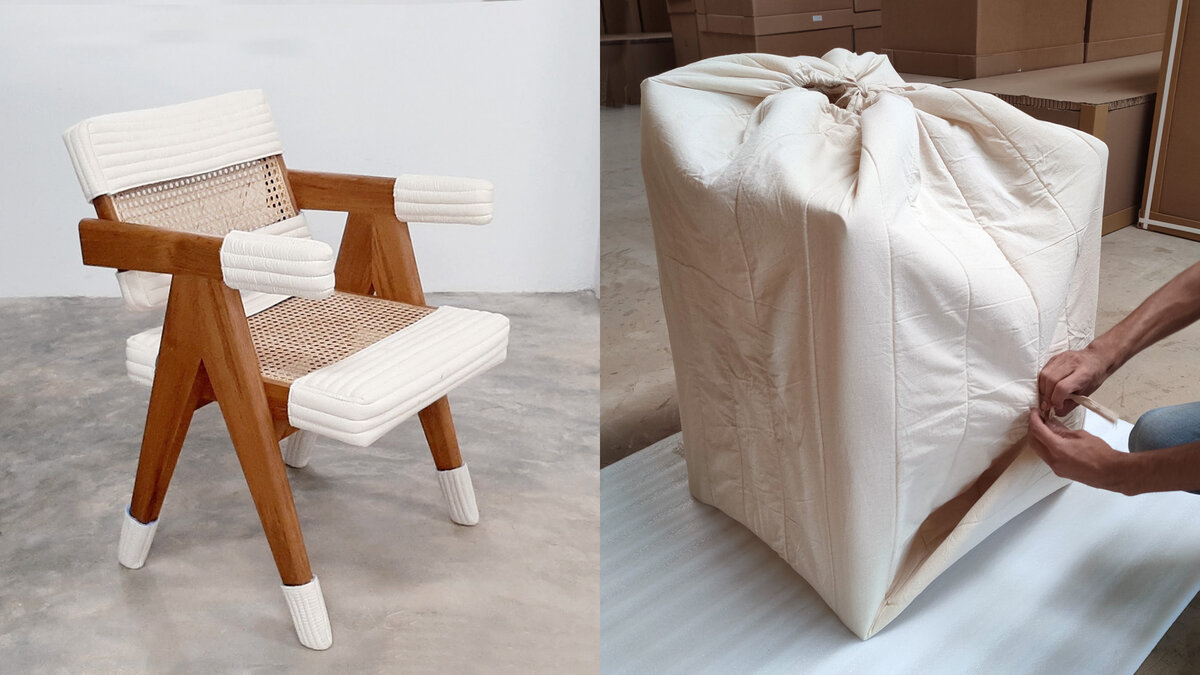
Maybe it was this charm that led BG’s initial plans for the sofa to be built around PH’s packing wrap. Designed and hand-stitched in-house the wrap in question consists of a lightly quilted cotton mitten which is fitted on furniture pieces somewhat like a tea-cosy on a teapot. ‘It was the quilting that caught Elric and the others’ imagination’, Aparna told me. But the BG team was also thinking along PH’s brief, which had been specifically focussed on upholstery, and textile.
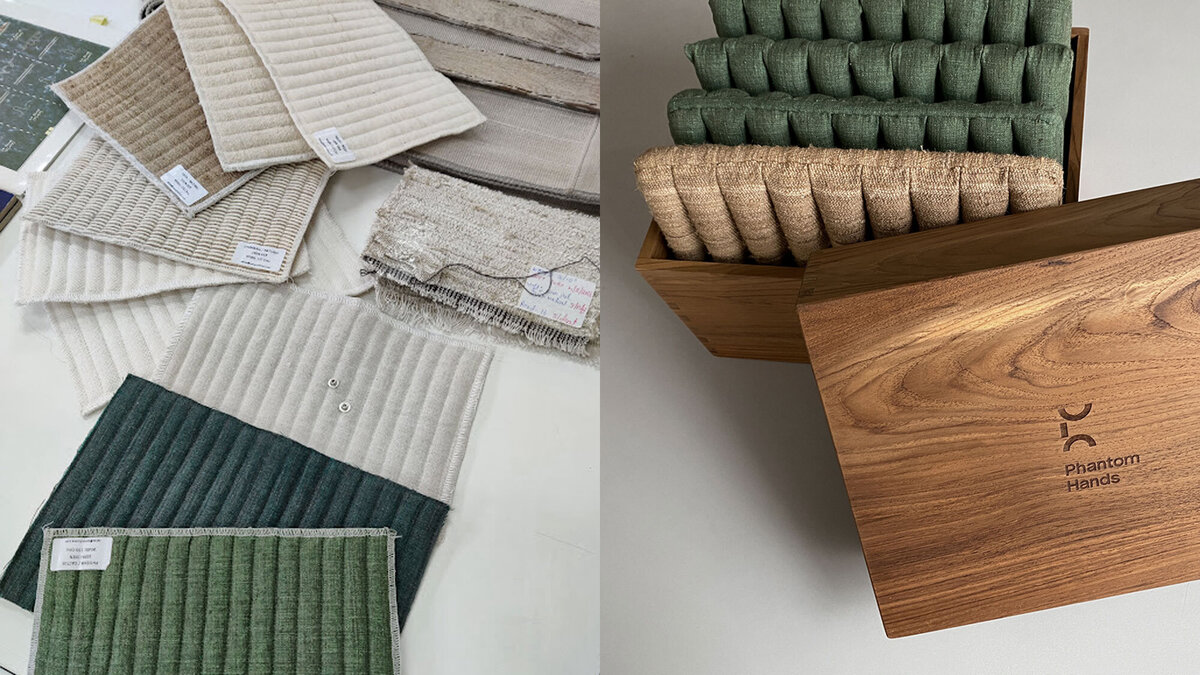
The rationale behind this was simple: historically, the vast universe of India’s handmade textiles has been an intrinsic component of its cultural identity, and yet they remain largely absent in upholstery. To Aparna this lacuna felt like an opportunity, absence is often fertile ground for experimentation. Additionally, handmade textiles from India seemed like the perfect medium for situating PH’s creations locationally.
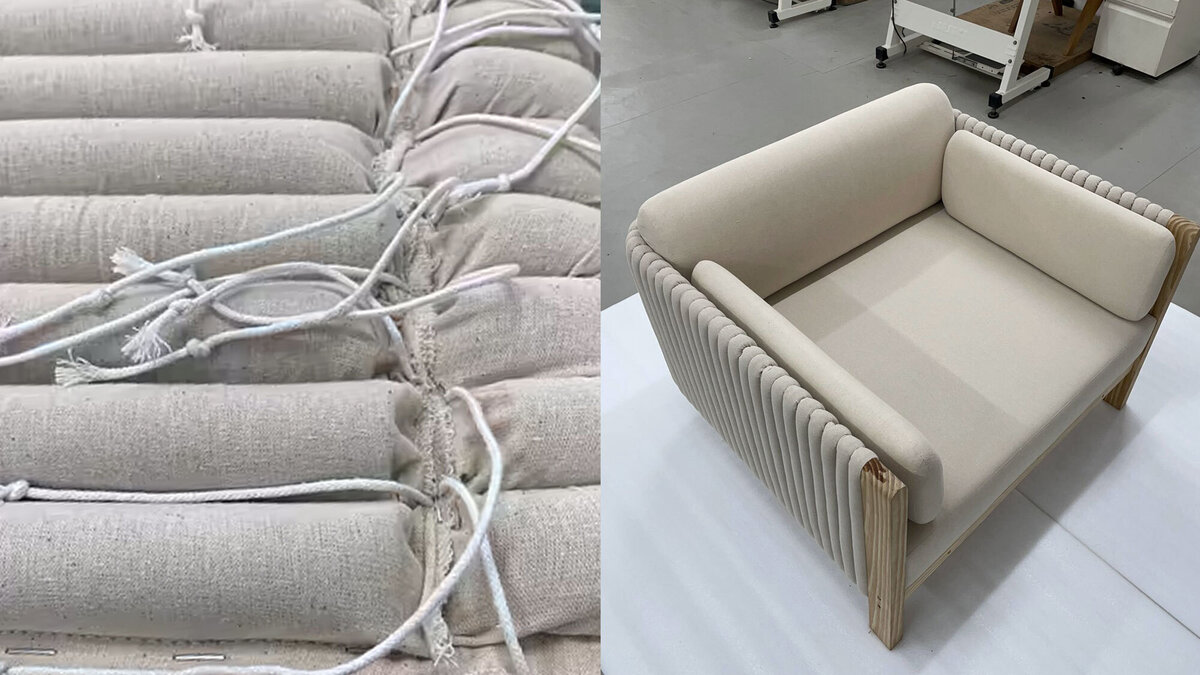
In 2019 the PH workshop added a brand new upholstery wing. Soon this found a team of talented upholsterers left untethered by the pandemic. Meanwhile PH’s association with Zanav, a Bangalore based home textile enterprise, had been growing. The pieces, one could say, had fallen naturally into place.
BG too was an important part of this puzzle. Their, now iconic, upholstered BOLD chair, was among a series of projects where textile played a central role. But it wasn’t their expertise with fabric that had led PH to them but their expertise in responding to an ask. ‘We approached them for their versatility and capacity to work with a variety of materials’, Deepak told me. ‘We thought their adaptability would be an asset’.
But, after several months of prototyping, it became clear that the quilted sofa wouldn’t work. Restless, Aparna headed to Zanav’s textile workshop to play around.
‘Zanav is a one man interface’, she told me, referring to founder Ravi Khemka. ‘I soak up his insight into textile traditions and understanding of fabric and colour. There are always things to discover in his ‘laboratory’.
Days later, while still looking around Ravi’s office, she found a small strip of narrow cloth tape pinned to a sample board. It piqued her interest.
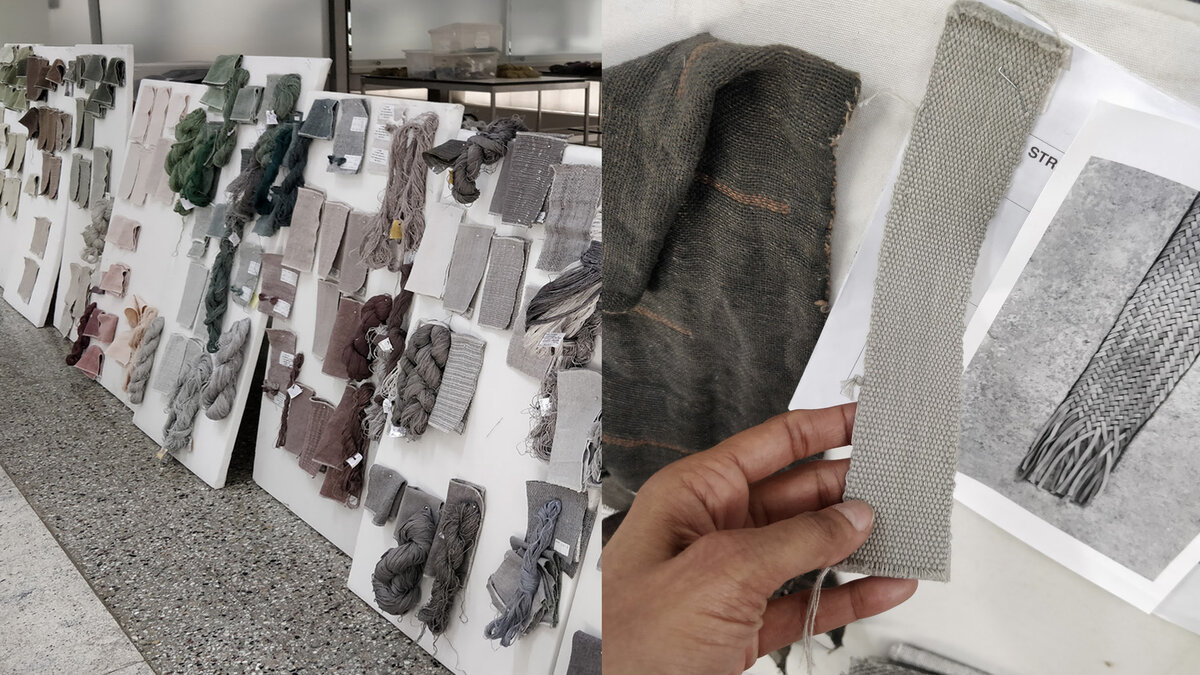
In everyday India Niwar tapes are both everywhere and nowhere. Its functionality allows it to disappear, sometimes as belts on school uniforms, karate outfits, at other times as utility ropes to hitch up tents. For years weaving Niwar tapes has been a source of employment for women in cottage industries and even for jail inmates. As unglamorous as it is mundane, the tapes often take centre stage on the charpai, on which it is used to make the bed frame webbing.
This is where Ravi says he first saw Niwar tapes. He no longer remembers what the tape Aparna found was meant for. He did however remember what was special about it - it was vat dyed, i.e. dyed via a rare manual technique that has all but died out in India. Zanav remains one of the last establishments to continue using it. ‘The dyeing technique is what makes these tapes unique’, Ravi told me. ‘Typically tape has a flat texture, but vat dyeing adds dimension to it in terms of colour. This is what lends them a sophisticated, artisanal quality’.
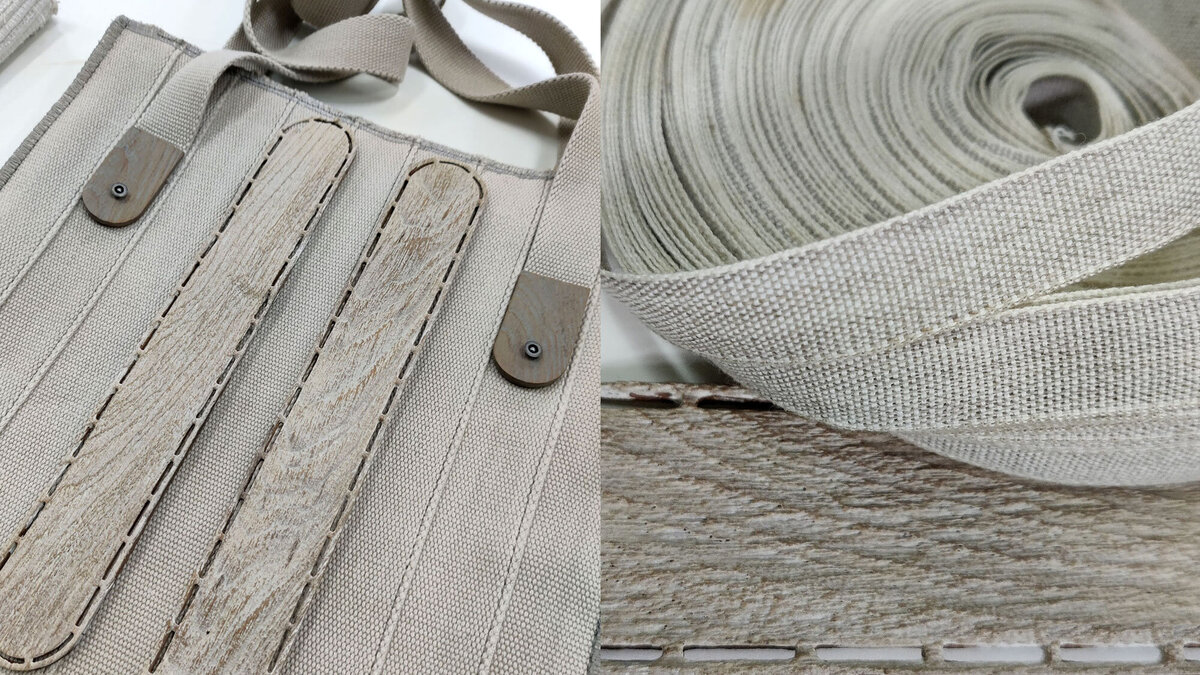

Aparna played around with the tapes she unearthed for a while, making bags and cushions. Then, one day, on a whim, she draped a mat she had made with them on the BG quilted sofa frame. ‘Immediately, I knew that this is what we had been waiting for’ she told me.
Excited, she reached out to Elric, Augustin and Gregoire. The idea was simple - a sofa with a hard exterior, defined by the coarseness of the cotton tapes, and a super soft, plush linen interior allowing the seater to become a sort of cocoon. Aparna had coincidentally at the same time been learning from a biologist friend about the evolutionary reason for the development of shells in amphibians. The two ideas suddenly collided: ‘All I could think of was a seat that replicated the idea of ‘hard outside- soft inside.’
Committed, responsive and patient, BIG-GAME was game from the start.
From Prototype to Perfection - Tapping into an ecology of design
Having worked out a rough prototype of the sofa with the Niwar tapes, PH invited BG to come down to Bangalore. Over the manic December week that followed BG took to the scene like fish to water. Together with the Phantom Hands team they built eight pieces in five flat days. It was all hands on deck - no computer renditions, no armchair designer manoeuvres, just PH’s entire production line working feverishly, in sync and round the clock towards a shared goal.
Syncing up the production process and working with members at every stage felt transformational, Aparna told me. The energy was electric enough to bring BG back a week after the end of the year break. ‘It made sense’ Aparna insisted. It was a rare delight to find such momentum, or work with one's hands, she pointed out. ‘We, who were trained in the fundamentals of design, fell in love with the discipline for its playfulness and the tactility of the making process. Then the internet and the industry took our bodies out of the equation. Being embodied felt like a homecoming.’
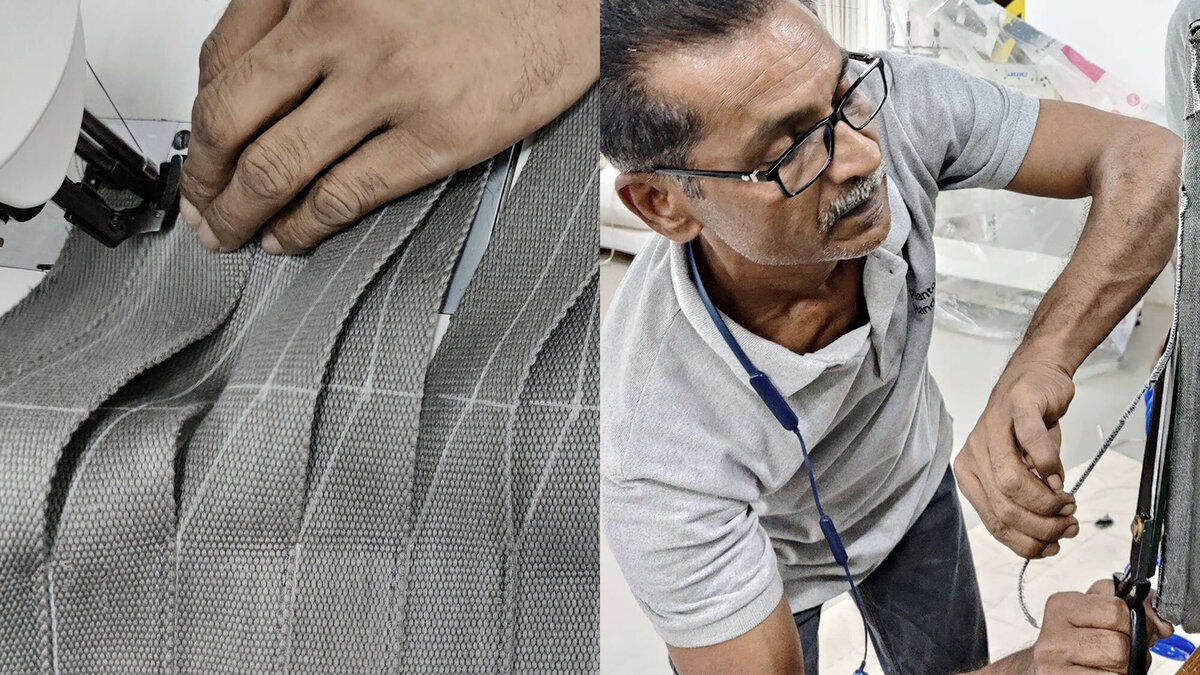
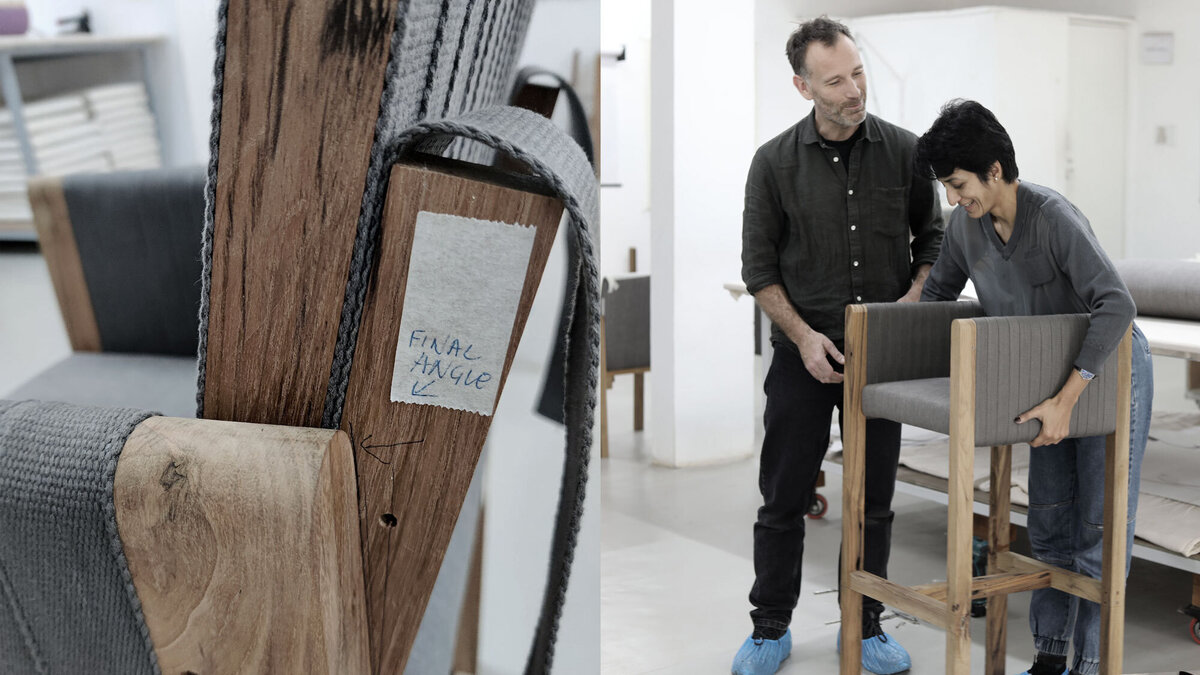
The experience owed almost entirely to the PH’s workshop culture. Aside from making experiments fun, this allowed BG to realise almost any idea they had, in real time. It was a test of the manufacturing ecology Aparna and PH have been cultivating over the years. ‘Unlike most manufacturers we have the rare privilege of being directly connected to every step, every element that goes into making our furniture.’ Deepak told me. ‘This includes craft knowledge, wood, fabric, polish, dye, hardware, custom made components. Our furniture items are an amalgamation of a plethora of specialised skills, materials, knowhow, provided by multiple vendors across multiple locations’.
Nothing captures this multi-vocal process of making better than Zanav’s Niwar tape. Starting with cotton yarn - procured from vendors in Coimbatore, Tamil Nadu, vat dyed in Kannur, Kerala and wound in Bangalore - the Niwar tape is finally woven in Pallakad, Kerala. At every stage of the tape’s production cycle there is a different vendor, different skill set, a different craft tradition, Ravi told me. This is no small asset. India is among the few places in the world where it's possible for manufacturers to work in such a hands-on manner.
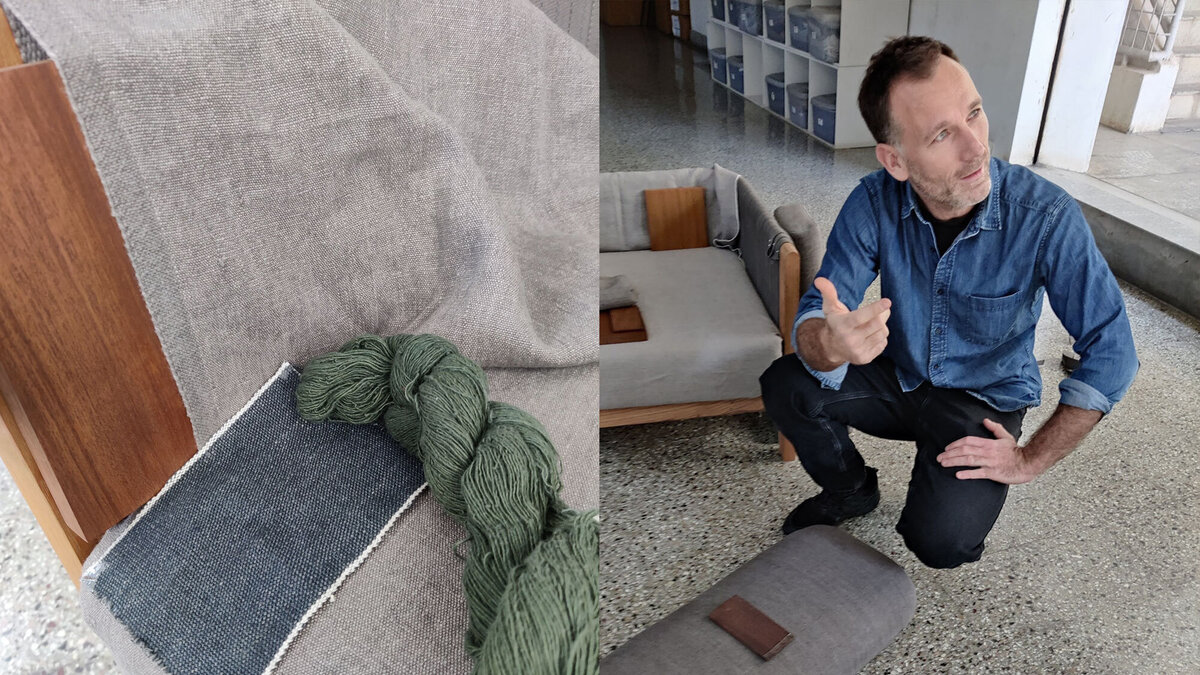
But that doesn’t make the process a cake walk. Even as he agreed to Aparna’s plans Ravi knew how difficult it would be to deliver the tapes he promised. There were hurdles aplenty. Primary among them was matching the colour of the vat dyed cotton tapes - to be wound around the wooden arms of the sofa seat - to the linen upholstery of the cushions. Being differently composed cotton and linen have dissimilar fibre profiles and colour takes differently to both. ‘It's hard enough for vat dyeing to match colours across batches’ Ravi told me, ‘two different base fabrics makes it an almost impossible task’.
Still, the colour pay-off of the method, both he and Aparna knew, made the challenge well worth it. Ultimately, it was the unusual combination of the Zanav tape’s ordinariness coupled with their quiet sophistication that gave BG’s design the unique edge PH had been looking for.
From Doubt to Direction: Finding Place via the Niwar Collection
The journey of the Niwar Collection began with a simple question - What would be specific about the sofa PH would make? The question was a scaled down version of a larger query - What was specific about PHs’ items? Location was at the core of the answer to both. But finding a way to make place - India - evident in its products then became a new preoccupation.
In the weeks of making with BIG-GAME at the workshop, however, it became obvious that it wasn’t the WHAT - or the final ‘product’- that defined PH’s relationship with its location, but HOW they are created.
The rich, variegated local craft and design ecology PH has plugged into, the systems it has created to consolidate it, is at the core of its place identity. Deeply defined by their cultural specificity these systems are also self-consciously avoidant of the reductionisms of nationality.
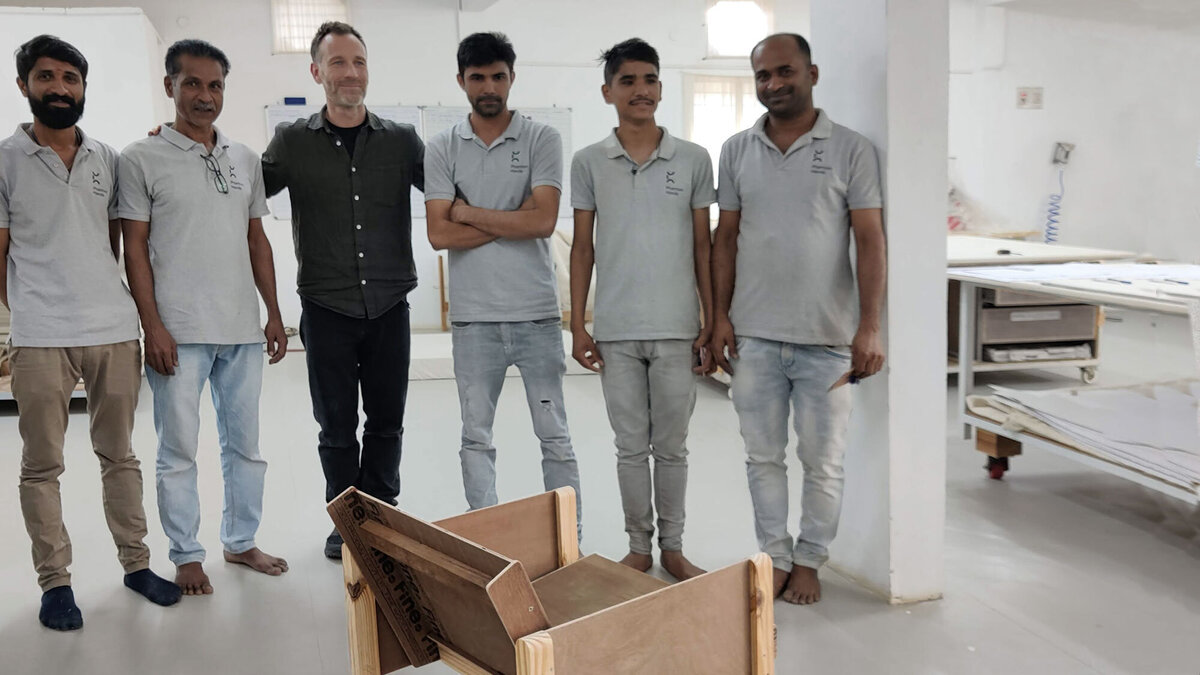
This realisation took Aparna back to her NID roots and moments from the 'System Design' course led by Prof. M.P. Ranjan. The crux of the perspective then had been similar - a shared consideration for all parties and processes involved at every stage of making, that transcends the idea of design as end product; to design as ecological. In the goal driven weeks spent in refining the Niwar collection with Phantom Hands’ many technicians and collaborators, Aparna felt she was experiencing this complex synchronicity and its challenges first hand.
A new plan to mould PH into a craft innovation enterprise emerged as a result. ‘There was a real sense of mission and agency instilled at NID.’ Aparna recalled, "What was very gratifying was to see that the Niwar Collection unexpectedly turned out to be an experiment, a sort of thinking bed for that foundational goal; the endeavour of Design- of which the object is a material symbol."
